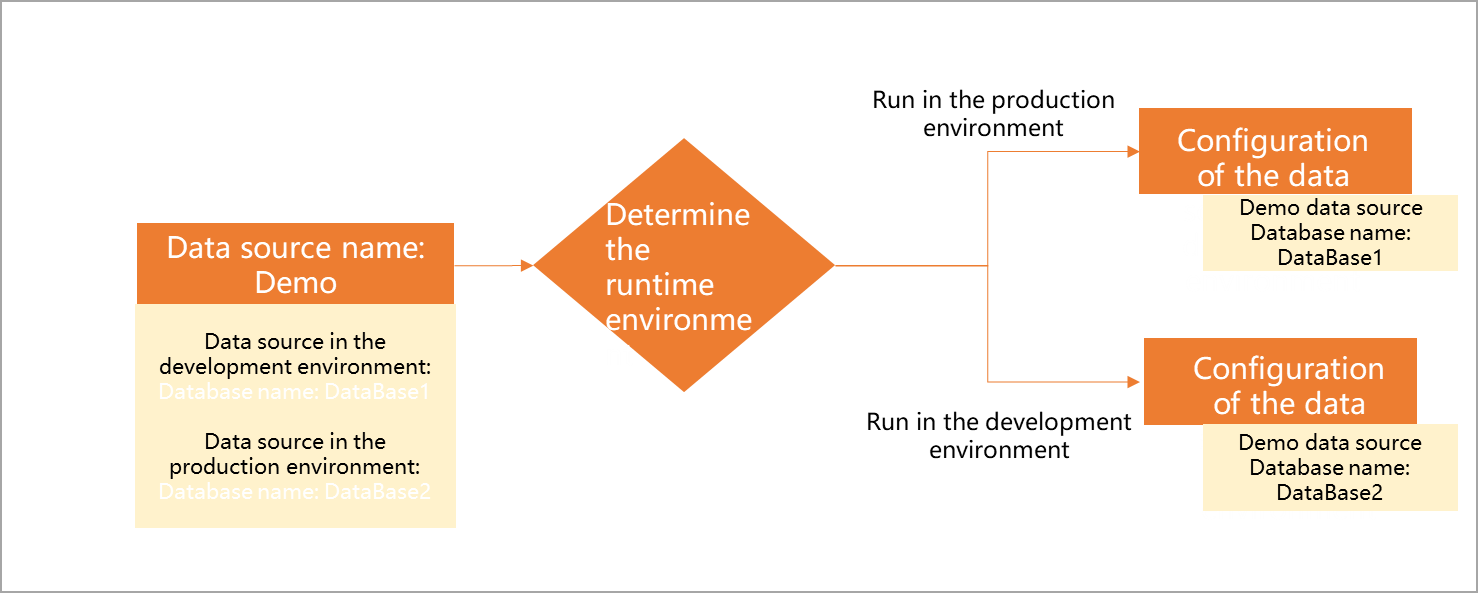Background information
In a workspace in standard mode, a data source has two sets of settings: one in the development environment and the other in the production environment. You can separately configure the data source in the development environment and production environment based on the two databases or data warehouses that are specified for the data source in the workspace in standard mode. When you run a synchronization task, the environment in which the task is run determines the database of the data source that is accessed by the synchronization task. This way, data of the development environment is isolated from data of the production environment. For more information about workspaces in standard mode, see Differences between workspaces in basic mode and workspaces in standard mode.
In a workspace in standard mode, Operation Center in the development environment and DataStudio access the data source that is configured in the development environment by default.
When you run a task in Operation Center in the production environment, Operation Center in the production environment accesses the data source that is configured in the production environment by default.

Note
You can configure different databases, usernames, and passwords for the same data source in the development and production environments. In this case, the synchronization task in which the data source is used may be successfully run on the DataStudio page but fail to run in the production environment due to different configurations of the data source in the development and production environments. You must make sure that the databases or data warehouses of the data source in the development and production environments are configured based on your business requirements. If you successfully run a task on the DataStudio page but fail to run the task in the production environment, or the amount of data differs in the development and production environments, you can troubleshoot the issue by comparing the success log of the task in the development environment with the error log of the task in the production environment.
Tasks are deployed to the production environment for running. If the configurations of the data source in the development and production environments differ, make sure that network connections are established between the resource group you want to use and the data source in different environments.
The data source isolation feature has the following impacts on workspaces:
Only workspaces in standard mode support the data source isolation feature. You can specify different databases or data warehouses for the same data source in a workspace in standard mode when you add the data source to the workspace.
After you upgrade a workspace from the basic mode to the standard mode, the original data source is configured in the development and production environments.
 Elastic Compute Service (ECS)
Elastic Compute Service (ECS)
 Container Compute Service (ACS)
Container Compute Service (ACS)




























